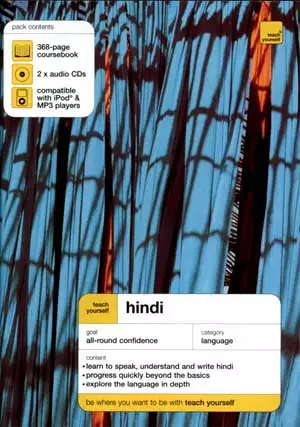|
भाषा एवं साहित्य >> टीच योरसेल्फ हिन्दी टीच योरसेल्फ हिन्दीरूपर्ट स्नेल, साइमन व्हाइटमेन
|
404 पाठक हैं |
|||||||
teach yourself Hindi
Hindi
Hindi starts with the basics but moves at a lively pace to give you a good level of understanding, speaking and writing. You will learn a style of language that will allow you to communicate confidently in everyday contexts and to understand the culture of Hindi speaker.
Rupert Snell is a reader at the school of Oriental and African Studies, University of London, where Simon Weightman is a Research Associate.
The CD that accompany the book have been specially recorded by native speakers and contain:
dialogues from the book
exercises in listening and speaking
Why not try
Beginner’s Hindi Script
Beginner’s Hindi
Hindi Conversation
Rupert Snell is a reader at the school of Oriental and African Studies, University of London, where Simon Weightman is a Research Associate.
The CD that accompany the book have been specially recorded by native speakers and contain:
This course is designed to enable those with no previous knowledge of Hindi to learn to read, write and converse in the language in the language with confidence and enjoyment. The course has also proved effective as teaching material for both class tuition and individual study.
The Hindi presented in this course is primarily colloquial and practical. To start by learning a very formal linguistic register, such as purists might prefer, would be to invite looks of incredulity (and incomprehension) during everyday encounters with Hindi-speakers.
An advantage of the colloquial approach is that it gives greater access to Urdu, Hindi’s sister-language. Hindi and Urdu share a virtually identical grammar and much of their vocabulary. In the higher registers they do part company, because Hindi looks to the classical Indian language of Sanskrit for its higher vocabulary, script and general cultural orientation, while Urdu looks to Persian and Arabic for these things. But at the everyday spoken level Hindi and Urdu are virtually identical, and you should not be surprised if you are complimented on your spoken ‘Urdu’ when you complete this course in ‘Hindi’!
The Hindi presented in this course is primarily colloquial and practical. To start by learning a very formal linguistic register, such as purists might prefer, would be to invite looks of incredulity (and incomprehension) during everyday encounters with Hindi-speakers.
An advantage of the colloquial approach is that it gives greater access to Urdu, Hindi’s sister-language. Hindi and Urdu share a virtually identical grammar and much of their vocabulary. In the higher registers they do part company, because Hindi looks to the classical Indian language of Sanskrit for its higher vocabulary, script and general cultural orientation, while Urdu looks to Persian and Arabic for these things. But at the everyday spoken level Hindi and Urdu are virtually identical, and you should not be surprised if you are complimented on your spoken ‘Urdu’ when you complete this course in ‘Hindi’!
|
|||||
अन्य पुस्तकें
लोगों की राय
No reviews for this book


 i
i 








